
views
Should you publish in hardcover or paperback?

Consider publishing in hardcover for prestige and aesthetics. Most major publishing houses release new books as hardcovers first, so some readers and book critics may be more likely to consider a hardback as a “legitimate” work—unfair as this may be! Hardcovers also appeal to readers who are looking for durability and aesthetic value (which is especially important if you’re publishing something like a photography or coffee table book). The downside, however, is that it’s much more expensive to self-publish in hardback format. Pros: More durable, higher quality materials, prestige, appeals to aesthetic readers, may help your book appear more “legitimate” to critics and news outlets Cons: More expensive to produce, sold at higher price points, hard to find printers and self-publishing platforms that offer hardback formats
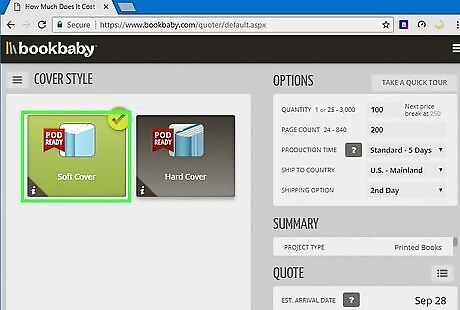
Publish in trade paperback for good quality at a lower price. Trade paperbacks are still about the same size as hardbacks, and they're printed on good paper. They have the advantage of quality craftsmanship coupled with a lower price than a hardback edition. In other words, the book will appeal to readers who are on a budget but also care about a book’s appearance. Pros: Less expensive than hardback, still appeals to most aesthetic readers, lightweight and compact, can be sold at a lower price point (which may help sales) Cons: Less durable than hardback books, slightly lower quality materials, harder to compete with new releases from major publishers (which usually come out in hardback first)
Saving Money When Self-Publishing
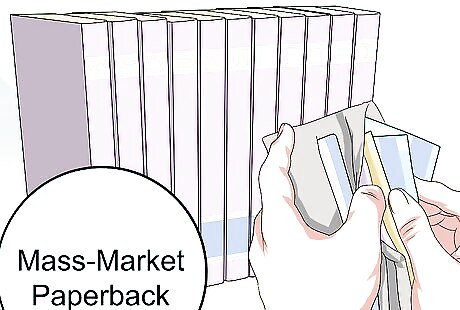
Save the most money by opting for a mass-market paperback. A small, mass-market edition will be the cheapest to buy and produce. They may not look as good as hardback or trade paperback versions, but publishing companies consider mass-market copies as great ways to introduce new authors and help them grow their readership.
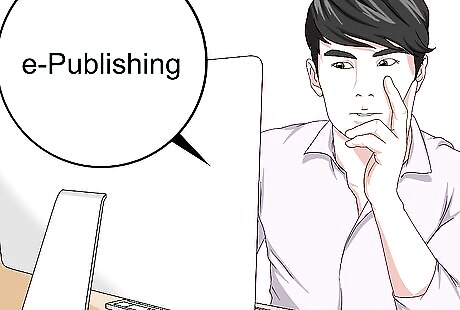
Consider e-publishing. This is a rapidly growing medium that will expose you to many different readers online, and it helps you conserve even more money by eliminating printing costs. Many e-books are priced between $2.99-$6.99, and this lower price tag may lead to more people buying your book. You may not get the satisfaction of holding the physical book in your hands, but remember that e-publishing can serve as a stepping stone to print publishing. You’re on your way!
Choosing Between Hardcover & Paperback as a Reader

Choose paperback to save money. As all readers on a budget know, paperback is the cheapest option out there. Typical trade paperbacks may be up to $10-$15 cheaper than their hardcover counterparts. Mass-market paperback versions, which are the cheaply made “short and fat” editions, may even cost less than $10. This is certainly a cost-efficient option for any avid reader!

Opt for paperback when traveling. Lightweight and floppy, paperbacks are great for plane rides and car rides, or even your daily commute. They also tend to take up less space than bulkier hardbacks, so you can easily stash them in your bag or backpack if you’ll have downtime to do some reading during the day.
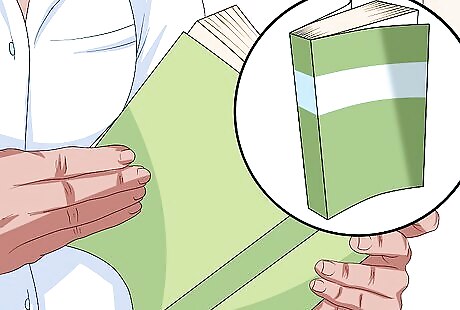
Buy a paperback for ease of holding. Thanks to their lighter weight and smaller size, paperbacks are easier to hold with one hand. You can easily read them while relaxing in bed or on the couch, or while traveling on a bus, subway, or plane.
Choose paperback if you want to annotate. Many bibliophiles enjoy annotating their books, which involves underlining, highlighting, and writing notes in the margins. If this sounds like you, a less expensive paperback edition may be the right choice. You can mark up the book to your heart’s content and easily purchase another copy if you want to read an un-annotated version in the future.
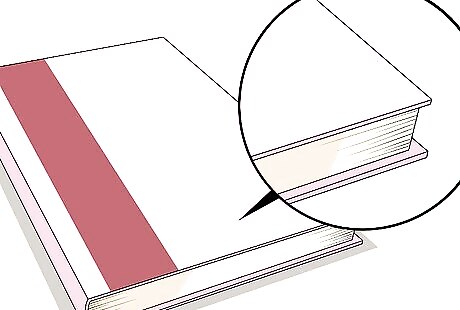
Buy hardback if you want to read the book as soon as it’s released. Most books are first released as hardbacks, then re-released in paperback form a few months later as a marketing boost. If you’ve been waiting and waiting for a book to come out, treat yourself to the more expensive hardback copy, so you can devour it right away.
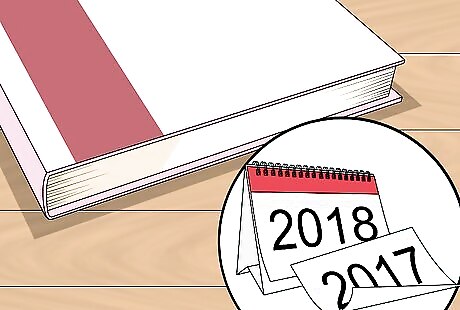
Go for a hardcover if you want to keep the book for a long time. Hardbacks are built to last. and they’re able to withstand daily wear and tear. Paperbacks, on the other hand, are easier to rip, wrinkle and stain. Over time, the glue of the spine may weaken, and the lower-quality paper may start to deteriorate as well. If you’d rather not dedicate your time and effort to preserving a paperback, choose a longer-lasting hardcover.
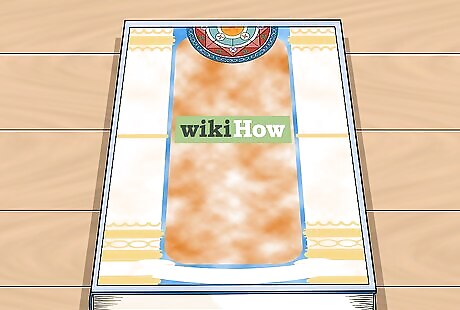
Choose a hardcover for the beautiful cover designs and illustrations. Hardcover books are known for their gorgeous designs. They often include beautiful artwork and illustrations on the book cover, dust jacket, and the pages themselves. These specific designs aren’t always available in the paperback version of the same book. If the visual appeal and aesthetics of the book mean a great deal to you, opt for the hardcover edition!

Buy a hardback if you’re giving the book as a gift. If you’re gifting the book to a friend or family member, consider going for a hardback edition. They tend to look nicer and feel more satisfying to open as a gift, and your loved one will appreciate that you sprung for the fancier version. Don’t worry if you don’t have the funds for a hardback copy, or if it’s out of stock. The most important thing is that you’ve chosen a good book for your loved one to enjoy, and they’ll appreciate the gift either way!
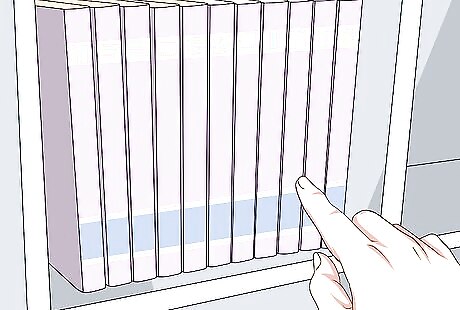
Choose a cover to match the other books on your shelf. Some readers love to have all their books be the same height—it just looks so clean and crisp on the shelf, don’t you think? Paperbacks tend to range more in height, so for an even shelf look, go with the more consistent hardback editions. Trade paperbacks will sometimes be released in a hardback-style height, so check the measurements of your shelf and your other books before you completely rule out a paperback. If the height matches, you can save a couple dollars while maintaining the even line of your bookshelf.
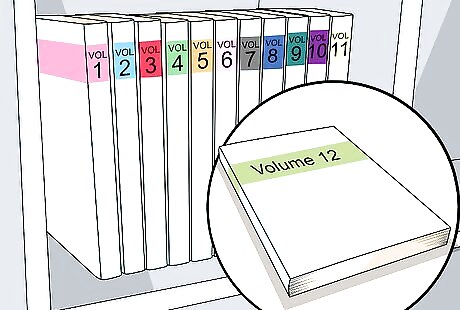
Choose an edition to match the others in a series. If the book you’re buying is part of a series, try to keep it consistent. In other words, if you have the rest of the series in hardcover, stick with hardcover when you get the next installment. Aesthetically-minded book lovers almost universally agree that this looks better on the shelf!
E-Readers & Audiobooks
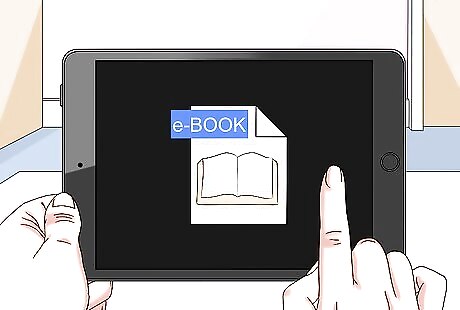
E-readers allow you to read books in their digital e-book format. If neither a hardback nor a paperback book seems like the right choice for you, consider purchasing an e-reader, such as a Kindle or Nook. E-readers are usually lightweight and easily transportable, so they’re great for travel. They also allow you to store dozens of books in one small device, so you’ll end up saving lots of space in your bag or backpack. E-readers are also more accessible to visually-impaired readers, thanks to the multiple letter size and line-spacing options available. E-books tend to be cheaper than paperback or hardback copies as well.
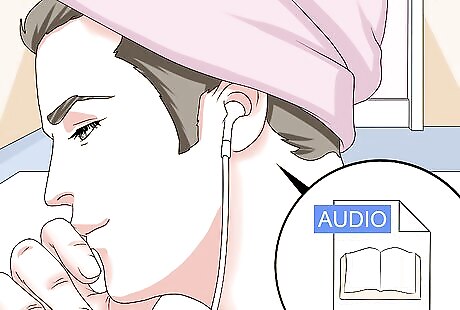
Audiobooks are great if you want to multitask. You can listen as you drive to or from work, or while you do chores around the house. This makes them perfect for busy readers who like to squeeze in their book-time wherever they can get it. Audiobooks also offer a more sensory reading experience, and they’re great for auditory learners!
What are the differences between hardbacks and paperbacks?
Paperback books have soft, flexible paper covers. They weigh less and take up less space than hardcover books, so they’re easier to carry around. Publishers often release new books as hardcovers first, then release a paperback version after a period of time has passed. These paperbacks tend to be much less expensive than their hardcover counterparts. Pros: inexpensive, lightweight, easily transported, take up less space Cons: less durable, lower paper quality, smaller print
Hardcover books have stiff covers made from heavy-duty cardboard. This thick cardboard is then covered with colored paper, cloth, or a leather-like material, which usually features a beautiful cover design. Hardcovers tend to be weightier and larger than paperbacks, and they’re more expensive. New books are usually published as hardcovers before they’re released in paperback format. Pros: durable, aesthetically pleasing, more substantial, higher quality materials Cons: heavier, harder to transport, take up more space, more expensive
















Comments
0 comment